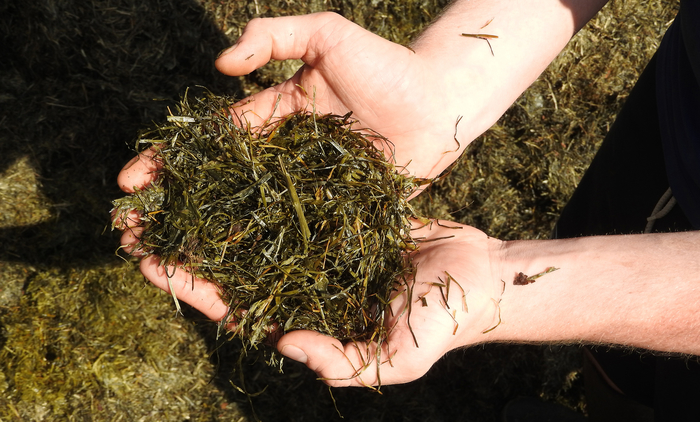Dairy farmers planning to adopt a multi-cut approach to grass silage making should be mindful of their fertiliser application policy in order to maximise the benefits.
This was the advice of Germinal GB’s Ben Wixey, speaking at UK Dairy Day, where feedback from farmers and reports from the trade pointed to the ever growing popularity of the earlier and more frequent cutting method.
“We’re seeing more and more dairy farmers adopting a multi-cut approach and, with crops being cut at optimum maturity as a result, there is evidence from this season’s silage analyses that the practice is having a positive impact on forage quality.
“This is good news for dairy farmers, as it will ultimately help to reduce bought-in feed costs, but it is important to manage fertiliser applications appropriately to get the best out of the system.”
Mr Wixey said that applying 2 units of nitrogen per acre per day (2.5kgN/ha) between cuts should be the aim, with timeliness being a key element.
“With a multi-cut system, the cutting interval should be in the region of 28-30 days, which would mean applying no more than 60 units per acre (75kgN/ha) between cuts,” he said, “and this should ideally go on as soon as the last trailer has left the field.
“Applying too much is likely to result in excessive nitrogen in the crop, which can disrupt the fermentation and lead to butyric silage. If too little nitrogen is applied, grass plants can become stressed, which usually means they go to seed prematurely. In this case, the digestibility of the silage will be reduced.
“There’s no doubting the potential rewards from a multi-cut system, but you must start with a good quality ley and pay attention to the details, including fertiliser applications.”


